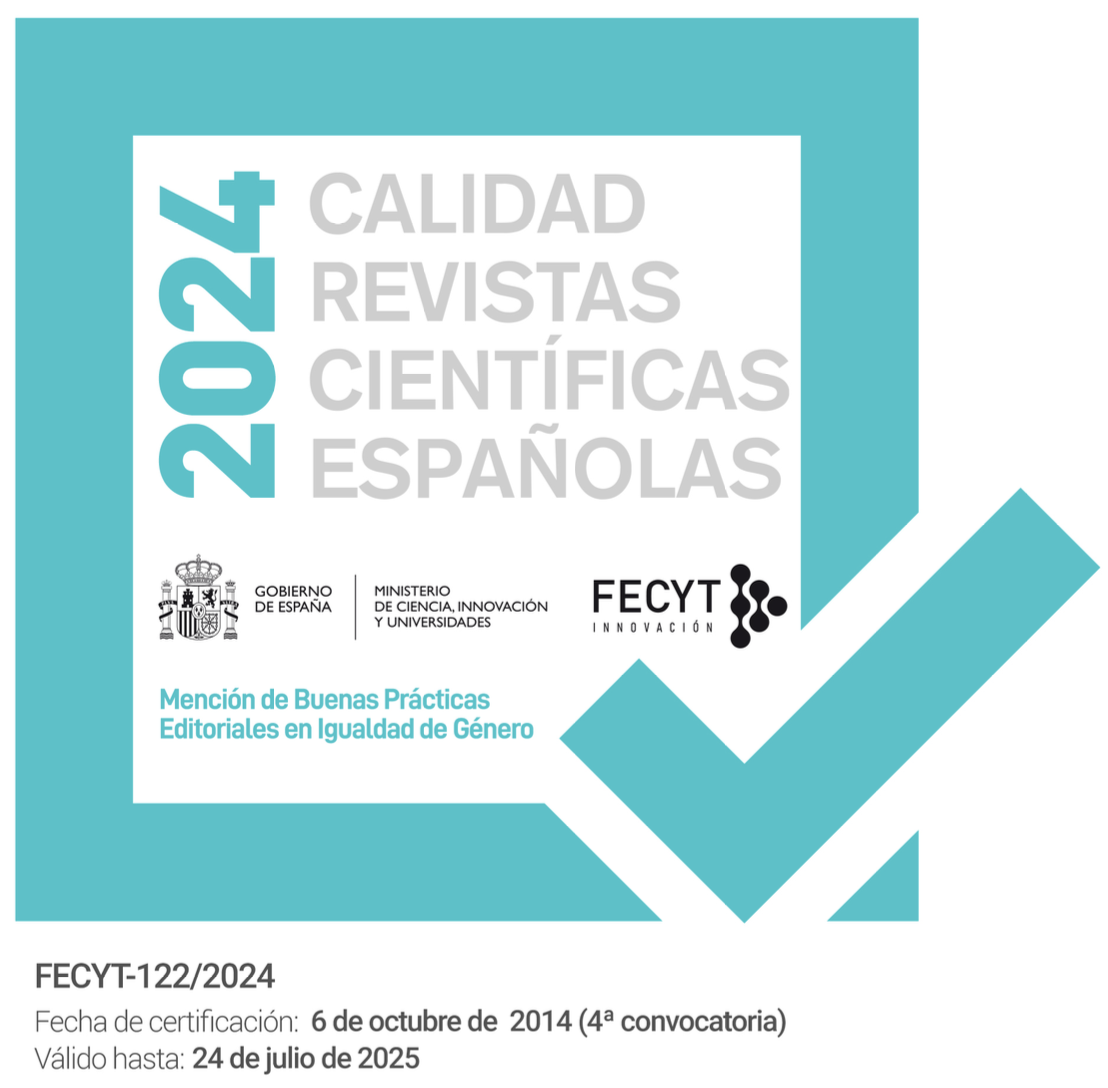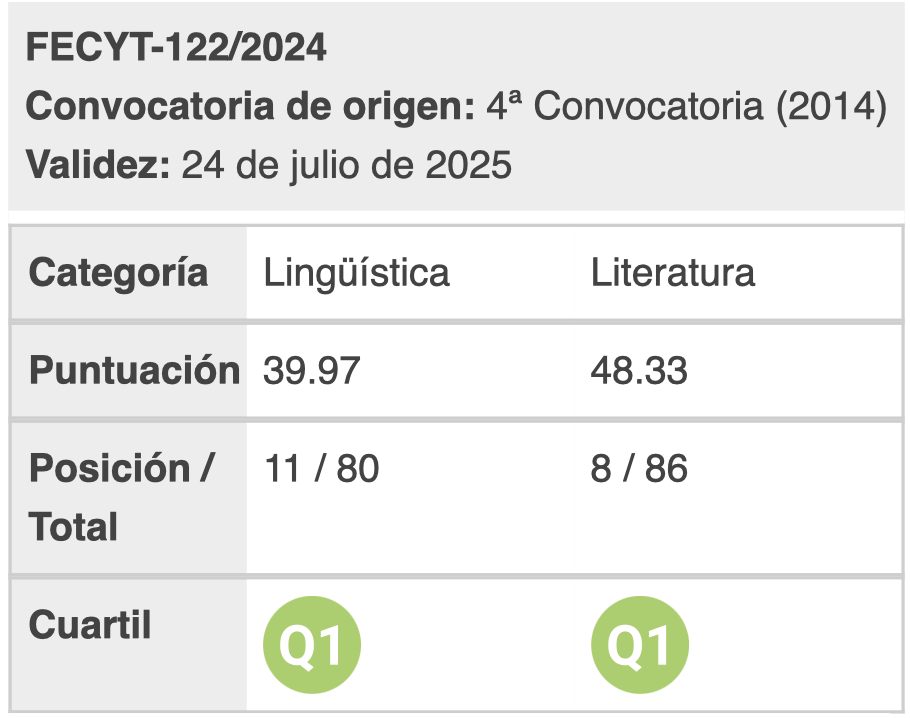Ectogenesis and Representations of Future Motherings in Helen Sedgwick’s The Growing Season
DOI:
https://doi.org/10.28914/Atlantis-2021-43.1.04Abstract
After the boom of feminist science fiction in the 1970s, many such novels have tackled the different sociocultural understandings of gender and sexual reproduction. Conventionally, patriarchal thinking tends to posit a biological explanation for gender inequality: women are supposed to be child bearers and the primary caregivers, whereas men should provide for the family through their work. However, if men could share procreation, would these views change? A recent work of fiction exploring this question from multiple perspectives is Helen Sedgwick’s The Growing Season (2017), a novel that presents a near future in which babies can be grown in artificial wombs that can be carried around. As an analysis of the novel will show, The Growing Season creatively explores the existing tensions among contemporary understandings of motherhood and feminism(s), as well as developments in reproductive biotechnology, through the different perspectives offered by the heterodiegetic third-person narration and multiple focalisation. Ultimately, the voices of the different characters in the novel convey a polyhedral vision of possible future feminist motherhood(s) where ideas of personal freedom and codependency are radically reconceptualised—a rethinking that becomes especially important nowadays, for the biotechnological elements of this fictional dystopia are already a reality.
Downloads
References
ALIAGA-LAVRIJSEN, Jessica. 2020. “A Transmodern Approach to Biology in Naomi Mitchison’s Memoirs of a Spacewoman.” In Onega and Ganteau 2020, 213-30.
—. 2021. “Naomi Mitchison’s Solution Three or the Need for Biological and Cultural Difference.” In Fiasson, Fournier and Garzon 2021, 233-52.
BALLARD, Olivia and Ardythe L. Morrow. 2013. “Human Milk Composition: Nutrients and Bioactive Factors.” Pediatric Clinics of North America 60 (1): 49-74.
BASSIN, Donna, Margaret Honey and Meryle Mahrer Kaplan, eds. 1994. Representations of Motherhood. New Haven, CT and London: Yale UP.
BENJAMIN, Jessica. 1994. “The Omnipotent Mother: A Psychoanalytic Study of Fantasy and Reality.” In Bassin, Kaplan and Honey 1994, 129-47.
BERNAL, John Desmond. 1929. The World, the Flesh and the Devil: An Enquiry into the Future of the Three Enemies of the Rational Soul. [Accessed October 14, 2019].
BODDY, Amy M. et al. 2015. “Fetal Microchimerism and Maternal Health: A Review and Evolutionary Analysis of Cooperation and Conflict beyond the Womb.” Bioessays 37 (10): 1106-18.
BRAEDLEY, Susan and Meg Luxton. 2010a. “Competing Philosophies: Neoliberalism and Challenges of Everyday Life.” In Braedley and Luxton 2010b, 3-21.
—, eds. 2010b. Neoliberalism and Everyday Life. Kingston: McGill-Queen’s UP.
BRITTAIN, Vera. 1929. Halcyon, or the Future of Monogamy. London: Kegan Paul, Trench, Trubner.
BUTLER, Judith. 1993. Bodies that Matter: On the Discursive Limits of Sex. London and New York: Routledge.
COBB, Matthew. 2015. “Sexism in Science: Did Watson and Crick Really Steal Rosalind Franklin’s Data?” Guardian, June 23. [Accessed July 17, 2015].
CONDIT, Deirdre M. 2010. “Androgenesis and Mothering Human Identity.” In O’Reilly 2010, 181-95.
COREA, Gena et al. eds. 1985. Man-Made Women: How Reproductive Technologies Affect Women. London and New York: Routledge.
DALY, Mary. 1978. Gyn/ecology: The Metaethics of Radical Feminism. Boston, MA: Beacon.
FERREIRA, Aline. 2015. “Beyond the Womb? Posthuman Parturitions in Joanna Kavenna’s The Birth of Love.” La Camera Blu. Rivista di Studi di Genere 11 (12): 11-28.
FIASSON, Arnaud, Pierre Fournier and Sabrina Juillet Garzon, eds. 2021. L’Ecosse: la différence / Scotland: The Difference. Besançon: Presses Universitaires de Franche-Comté.
FIRESTONE, Shulamith. 1970. The Dialectics of Sex: The Case for Feminist Revolution. New York: Morrow.
GASKIN, Ina May. 2011. Birth Matters: A Midwife’s Manifesta. New York: Seven Stories.
GELFAND, Scott and John R. Shook, eds. 2006. Ectogenesis: Artificial Womb Technology and the Future of Human Reproduction. Amsterdam and New York: Rodopi.
GLENN, Evelyn Nakano, Grace Chang and Linda Forcey, eds. 1994. Mothering: Experience, Ideology and Agency. London and New York: Routledge.
HAIRE, Norman. 1927. Hymen, or the Future of Marriage. London: Kegan Paul, Trench, Trubner.
HALDANE, J. B. S. 1924. Daedalus or Science and the Future. New York: E. P. Dutton.
HARAWAY, Donna. 1976. Crystals, Fabrics, and Fields: Metaphors That Shape Embryos. Berkeley, CA: North Atlantic.
—. 1991. Simians, Cyborgs, and Women: The Reinvention of Nature. London: Free Association.
HAYS, Sharon. 1996. The Cultural Contradictions of Motherhood. New Haven, CT: Yale UP.
JEREMIAH, Emily. 2006. “Motherhood to Mothering and Beyond: Maternity in Recent Feminist Thought.” Journal of the Association for Research on Mothering 8 (1): 21-33.
KELLY, John and Thomas Verny. 1982. The Secret Life of the Unborn Child: A Remarkable and Controversial Look at Life before Birth. London: Sphere.
KLEIN, Renate Duelli. 1985. “What’s ‘New’ about the ‘New’ Reproductive Technologies?” In Corea et al. 1985, 38-51.
LUDOVICI, Anthony Mario. 1927. Lysistrata: Woman’s Future and Future Woman. London: Kegan Paul, Trench, Trubner.
MARGULIS, Lynn. 1970. Origin of Eukaryotic Cells: Evidence and Research Implications for a Theory of the Origin and Evolution of Microbial, Plant and Animal Cells on the Precambrian Earth. New Haven, CT: Yale UP.
—. 1993. Symbiosis in Cell Evolution: Microbial Communities in the Archean and Proterozoic Eons. New York: W. H. Freeman.
MARGULIS, Lynn and Dorion Sagan. 1986. Origins of Sex: Three Billion Years of Genetic Recombination. New Haven, CT: Yale UP.
NELSON, Margaret K. 2010. Parenting out of Control: Anxious Parents in Uncertain Time. New York: New York UP.
ONEGA, Susana and Jean-Michel Ganteau, eds. 2020. The Singular Response of Literature to the Transmodern Paradigm. London and New York: Routledge.
O’REILLY, Andrea, ed. 2010. Twenty-First Century Motherhood: Experience, Identity, Policy, Agency. New York: Columbia UP.
—. 2016. Matricentric Feminism: Theory, Activism and Practice. Bradford: Demeter.
PARTRIDGE, Emily A. et al. 2017. “An Extra-uterine System to Physiologically Support the Extreme Premature Lamb.” Nature Communications 8, 15112: 1-15.
PAUL, Eden. 1930. Chronos, or the Future of the Family. London: Kegan Paul, Trench, Trubner.
RAYMOND, Janice G. 1993. Women as Wombs: Reproductive Technologies and the Battle over Women’s Freedom. New York: Harper.
RICH, Adrienne. 1976. Of Woman Born: Motherhood as Experience and Institution. New York: Norton.
—. 1986. Of Woman Born: Motherhood as Experience and Institution. 2nd ed. New York: Bantam.
ROSEN, Christine. 2003. “Why Not Artificial Wombs?” The New Atlantis: A Journal of Technology and Society 3: 67-76.
ROTHMAN, Barbara Katz. 1994. “Beyond Mothers and Fathers: Ideology in Patriarchal Society.” In Glenn, Chang and Forcey 1994, 139-57.
RUDDICK, Sara. 1989. Maternal Thinking: Towards a Politics of Peace. Boston, MA: Beacon.
SANGER, Margaret. 1922. The Pivot of Civilization. Project Guttenberg. [Accessed November 13, 2019].
SEDGWICK, Helen. 2017. The Growing Season. London: Harvill Seeker.
—. 2019a. “Reinventing Motherhood.” Interview. The Vintage Postcast audio, 20:06. March 31, 2019. [Accessed September 17, 2019].
—. 2019b. “External Wombs, Progress and Protest: Helen Sedgwick on her Second Novel, The Growing Season.” Interview by Frances Gertler. Foyles. [Accessed August 27, 2019].
—. 2020. “Helen Sedgwick.” Scottish Book Trust: Live Literature Author Directory. [Accessed June 20, 2020].
SOLINGER, Rickie. 2001. Beggars and Choosers: How the Politics of Choice Shapes Adoption, Abortion and Welfare in the United States. New York: Hill and Wang.
SQUIER, Susan Merrill. 1994. Babies in Bottles: Twentieth-Century Visions of Reproductive Technology. New Brunswick: Rutgers UP.
STANWORTH, Michelle. 1987. Reproductive Technologies: Gender, Motherhood and Medicine. Cambridge: Polity.
TONG, Rosemarie. 2006. “Out of Body Gestation: In Whose Best Interest?” In Gelfand and Shook 2006, 59-75.
TUCKER, Judith Stadtman. 2010. “From ‘Choice’ to Change: Rewriting the Script of Motherhood as Maternal Activism.” In O’Reilly 2010, 293-309.
VILELLA, Felipe et al. 2015. “Hsa-miR-30d, Secreted by the Human Endometrium, is Taken up by the Pre-Implantation Embryo and Might Modify its Transcriptome.” Development 142 (18): 3210-21.
WALLACE, Rachel L. 2017. “The 14 Day Rule: Scientific Advances and the End of Abortion Rights.” Journal of Science Policy and Governance 11 (1): 1-11.
WOOLF, Virginia. (1938) 2015. Three Guineas. Oxford: Oxford UP.








